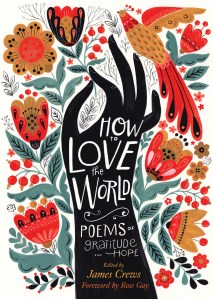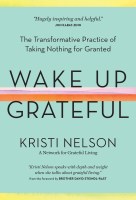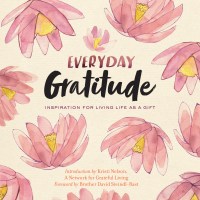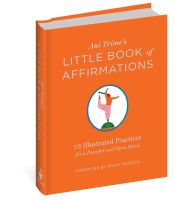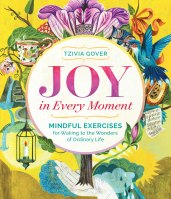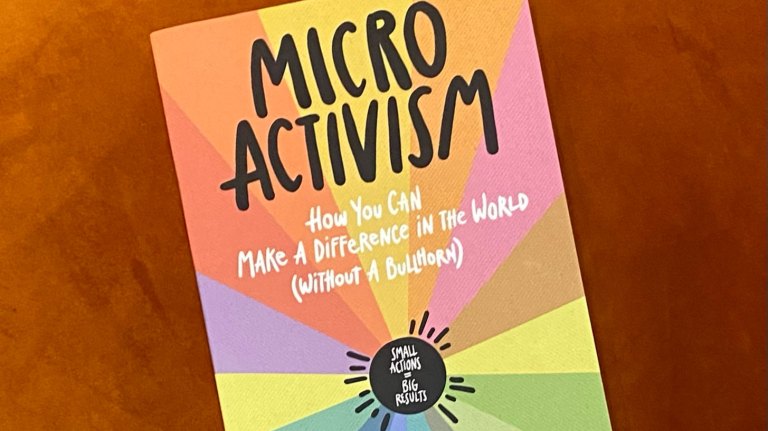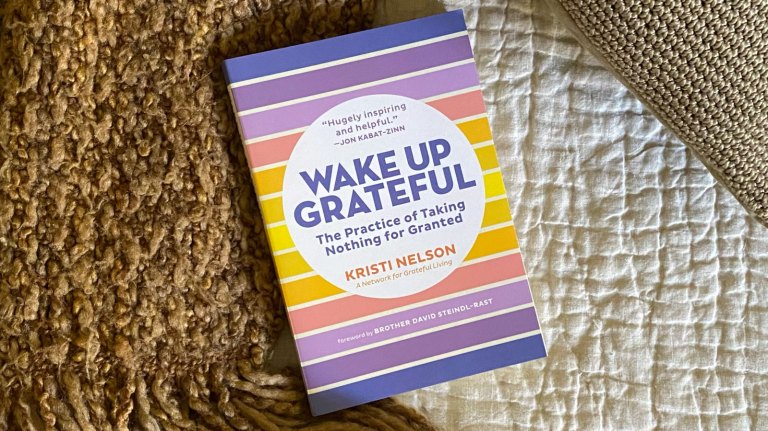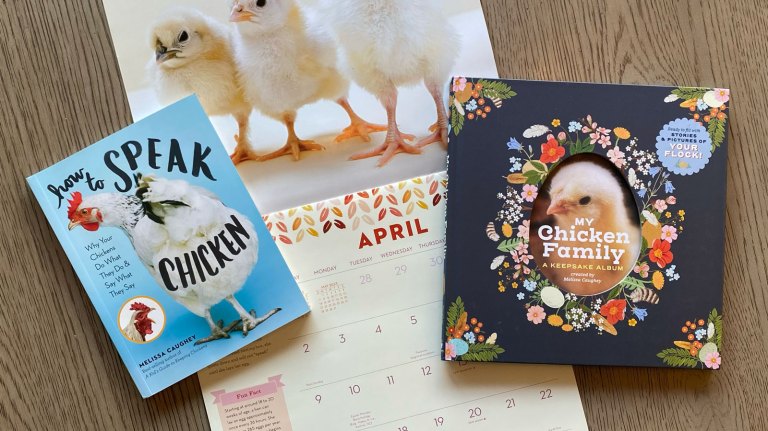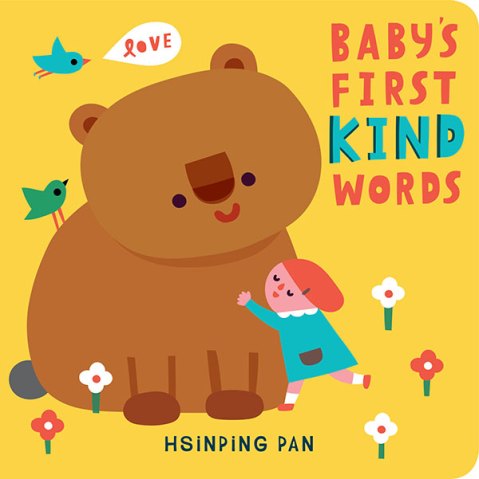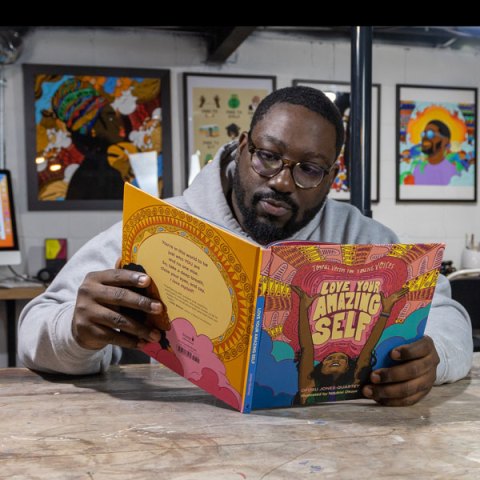How to Love the World: An Interview with James Crews
“Hope is a basic need for all of us … without hope, joy is just not possible.”
Acquisitions editor Liz Bevilacqua recently sat down with James Crews to chat about his new book, How to Love the World: Poems of Gratitude and Hope, and how it came to be. Pour a cup of tea, pull up a chair, and learn more about Crews’s creative process.
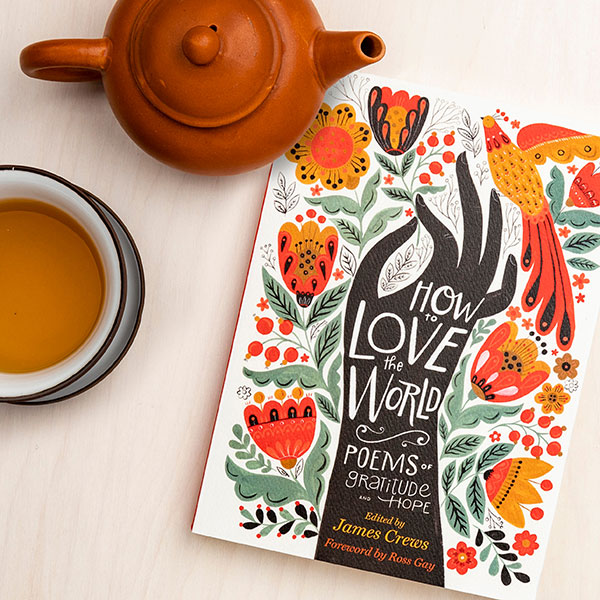
LIZ: What made you want to put this book together? How did you begin?
JAMES: I started this book as a response to all the negative news out there. It seemed that so many of my friends and I were feeling drained, overwhelmed, and disconnected from any sense of joy in life with everything that was going on. I’ve always been moved by Brother David Steindl-Rast’s teachings on gratefulness, and his view that it’s not happiness that makes us grateful, but gratefulness that makes us happy.
More recently, I was inspired by Ross Gay’s The Book of Delights to put together an anthology of poems that delighted me, brought me joy, and showcased gratefulness for the little things as a way of life. I feel so lucky too that Ross Gay was kind enough to write a Foreword for How to Love the World.
I actually began gathering the poems when my husband and I were traveling in Argentina in January of 2020, and I’ll never forget walking through Customs at the end of that month and seeing the sign: If you have traveled to Wuhan, China, please alert customs agent. I remember saying out loud, “Oh, no. What now?” as we stood in line. I had no idea, of course, this was the first sign that we were about to enter a global pandemic. It never occurred to me either that the poems I’d continue to seek out over the next few months would feel more necessary and timely than ever.
LIZ: Why did you choose gratitude and hope as the organizing elements?
JAMES: I teach poetry in classrooms with students of all ages, and what I was seeing, in many of my younger students especially, was a distinct lack of hope or faith in their future. Because of our divided politics and the blatant environmental destruction happening all over the world, young people understandably have a lot of trouble believing they’ll even inherit a habitable planet. In my own life, I was feeling many of the same things, but I’ve always been an optimist and have always believed (or wanted to believe!) in the best of humanity.
I keep this quote from the great essayist and author of Charlotte’s Web, E.B. White near my writing desk: “Every morning I awaken torn between a desire to save the world and an inclination to savor it.” I don’t see these two drives as separate, actually, and so I wanted to put together a book of poems that would point to what was best about humans, what aspects of the natural world could still be enjoyed. It strikes me that people aren’t often moved to save the world if they never stop to savor and appreciate it—and that includes stopping to appreciate each other, too. Statistics and dire warnings don’t always move people to action, but stories do, especially those of intimate moments between loved ones, or an instant of pure delight in nature. I think of Kim Stafford’s poem, “Shelter in Place,” included in the collection, in which he observes: “Moss found how to hug a stone for life.” There’s such gentleness and relief in those lines.
Initially, I thought I’d edit an anthology of poems about gratitude and joy, but once the pandemic officially hit in March of 2020, hope became a basic need for all of us, and I decided that needed to be one of the main themes for How to Love the World.
Without hope, joy is just not possible. On a personal level, I also felt my own lifelong anxiety issues coming up again. I needed all of the poems in this book to ground me again in gratitude for the world as it is, and still can be. I needed these poems to remind me that hope lay in our everyday relationships with the people in our lives, and even the strangers that we meet. Each of these poems, telling its own story of a moment, became like medicine to me at a time when nothing else was working to keep me present and calm.
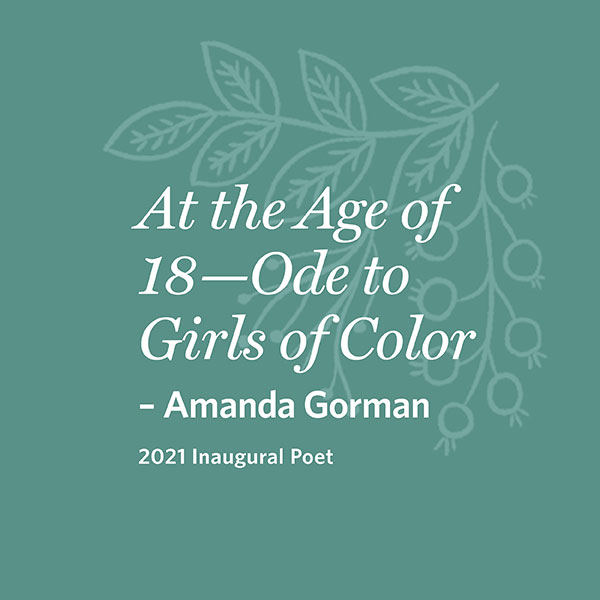
LIZ: Poetry seems to be having a moment in popular culture (hooray!). Amanda Gorman at the Inauguration and the Super Bowl! What do you think poetry can offer people in these times?
JAMES: It was a great honor to include one of Amanda Gorman’s poems, “At the Age of 18—Ode to Girls of Color,” a kind of love letter to her younger self, in How to Love the World. And I couldn’t be happier that she’s being recognized for her excellent and groundbreaking work. She’s the perfect ambassador for sharing poetry right now that can be accessible, inspiring, and yet still complex. After Amanda’s appearances at the Inauguration and Super Bowl, I heard from a lot of people in my life and network who aren’t into poetry, telling me how much they loved her work and her performance.
We sometimes think of poetry as something that’s overly academic and experimental—in other words, too complicated for most of us to understand and appreciate. Some of my family and friends tell me they just don’t “get it,” and I respect that. But I’m making it my life’s mission to share poetry that almost anyone can understand. I love poems that take a deep-dive into a moment, that use the everyday language and situations of real-life to make that moment come alive in me.
Amanda is reminding people of the power of poetry to heal and give hope, but the pandemic is doing this, too. I’ll never forget a story that the poet Mark Doty tells, of going into a Barnes & Noble in Manhattan after the September 11th attacks, and the whole place feeling like a ghost town—except for the Poetry section. It seemed that everyone in the store was gathered there, among the poets, looking for solace and understanding at a time that seemed bewildering and disturbing. So many of us turn to poetry during times of crisis or grief, or to mark major life transitions. Think about how often poems are read during weddings, funerals, graduations, or shared during holidays. Because a poem can hold so much—sorrow and joy, pain and delight, often in the same breath—it’s the perfect art form for these difficult times we’re in.
LIZ: There is a range of established and emerging poets in the book. How did you decide which poets and which poems you wanted to include?
JAMES: Editing a book of poems is a creative process, just like putting together a book of my own, and I always trust my intuition. In a few cases, I reached out to poets I know personally, like Ellen Bass and Danusha Laméris, asking them to help me spread the word about the collection. Former U.S. Poet Laureate Ted Kooser is also a mentor and friend, so I asked him for some newer poems, too. But mostly, when I’m editing an anthology, I just dig through my files and trust whatever comes across my radar at the time. If a poem deeply moves me, if I feel like I want to share it with everyone I know, then that’s a sign it belongs in the collection.
My social media feed is filled with poets and poems from all over the world, and in April of 2020, to help people through the beginning of the pandemic, I recorded a video of myself reading a poem every day and offering a little message of healing and hope. People began sending me poems they loved, too, and that was how I found Kim Stafford’s “Shelter in Place,” and Jane Hirshfield’s “Today, When I Could Do Nothing,” both poems that speak strongly to experiences of the pandemic, but are universal enough to transcend this time.
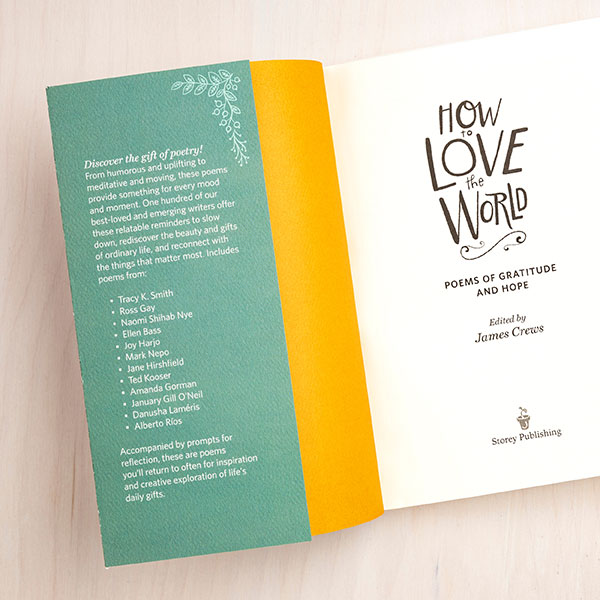
LIZ: The Reflective Pauses scattered throughout the book are a nice invitation for the reader to think and write more deeply about some of the poems. How did you develop them, and what do you hope they offer to readers?
JAMES: I’ve been teaching poetry for over fifteen years now, so I’m often using the poems I share with my classes as prompts to guide them into their own writing. For myself too, every poem I read and love becomes an invitation to explore some of the same themes or images in my own work. The best poems just make me want to write. I often find too that if readers are given permission to sit with a poem a little longer and reflect, they’ll come up with connections to their own lives as well. Sometimes it helps to have a little commentary on a particular poem, which can open it up in some new ways, and model a closer reading. Because poems are so short and can breeze past our consciousness so fast, we might be tempted to read through and move on before our mind is really ready.
I thought the Reflective Pauses and the prompts would help people become even more personally invested in some of these poems, in the same ways that I have over the years. Heather Lanier’s poem about saving an ant and regaining her love of the world offers a great example of this. How many times do each of us (myself included!) vow that we’re going to pay more attention, be more kind, and then lose it in a moment of distraction or anger? She shows us how to be more gentle with ourselves and just come back from that.
Another good example is William Stafford’s poem, “Any Morning,” which invites us to be content, “Just lying on the couch and being happy.” When we remember that we can find joy in “doing nothing,” that we’re allowed to take care of ourselves in this way, we’re much more likely to engage in self-care in the future. Why not write a poem about doing nothing, about just “loitering,” as Ross Gay puts it in his The Book of Delights.
LIZ: The poems reflect on gratitude and hope in both big and small ways. Some of them contemplate love or death or parenthood while others simply consider a quiet moment in nature or the gift of a friend’s presence. How can we cultivate gratitude for the small moments in daily life, or for the difficult times on life?
JAMES: I write almost every morning, and as part of that writing, I try to come up with at least three new things I’m grateful for and then articulate why. Science shows that if we come up with original gratitudes each day, and then say why these things are meaningful for us, the energy of that appreciation is much more likely to sink into our cells somehow. Sometimes, the gratitude comes in the form of a poem, and occasionally I’m just making a list of gratitudes. I think about what Lynne Twist says: “What we appreciate appreciates.” Whatever we give our grateful attention to will keep growing in our own lives. I know these are tough times, so we might have to focus on the small gratitudes to start with, but those can then bloom into more gratefulness and hope for the future.
In his TED Talk on gratefulness (which I highly recommend), Br. David Steindl-Rast says that we can’t be grateful for everything, but we can be grateful for what it teaches us.
My father passed away suddenly at the age of 43, and I was only twenty years old at the time. We knew he was ill, but his death came as a shock, and it was soon after this that I began writing poetry. I’ve found that my poems, and the poems by others that I love, are each a gateway into those small moments in life. If nothing else, the loss of my father so early on taught me that those quieter moments are the ones we remember the most. We often post on social media about the so-called big moments, but it’s the small, everyday stuff that matters at the end of a life.
I have a kind of mantra that I say to myself when I’m feeling distracted, about to blow up at my husband or someone else I care about: “Only moments matter.” I can’t help but feel that each of the poems in How to Love the World reinforces that universal truth. If we focus too much on the big stuff, and only on what’s wrong with the world, then we can easily lose sight of what’s going right, and what we can still appreciate. For me, the only way to love the world is through relishing the daily moments that make up our lives.
Learn More
What the world needs now – featuring poems from inaugural poet Amanda Gorman, Ross Gay, Tracy K. Smith and more.
More and more people are turning to poetry as an antidote to divisiveness, negativity, anxiety, and the frenetic pace of life. How to Love the World: Poems of Gratitude and Hope offers readers uplifting, deeply felt, and relatable poems by well-known poets from all walks of life and all parts of the US, including inaugural poet Amanda Gorman, Joy Harjo, Naomi Shihab Nye, Ross Gay, Tracy K. Smith, and others. The work of these poets captures the beauty, pleasure, and connection readers hunger for. How to Love the World, which contains new works by Ted Kooser, Mark Nepo, and Jane Hirshfield, invites readers to use poetry as part of their daily gratitude practice to uncover the simple gifts of abundance and joy to be found everywhere. With pauses for stillness and invitations for writing and reflection throughout, as well as reading group questions and topics for discussion in the back, this book can be used to facilitate discussion in a classroom or in any group setting.
